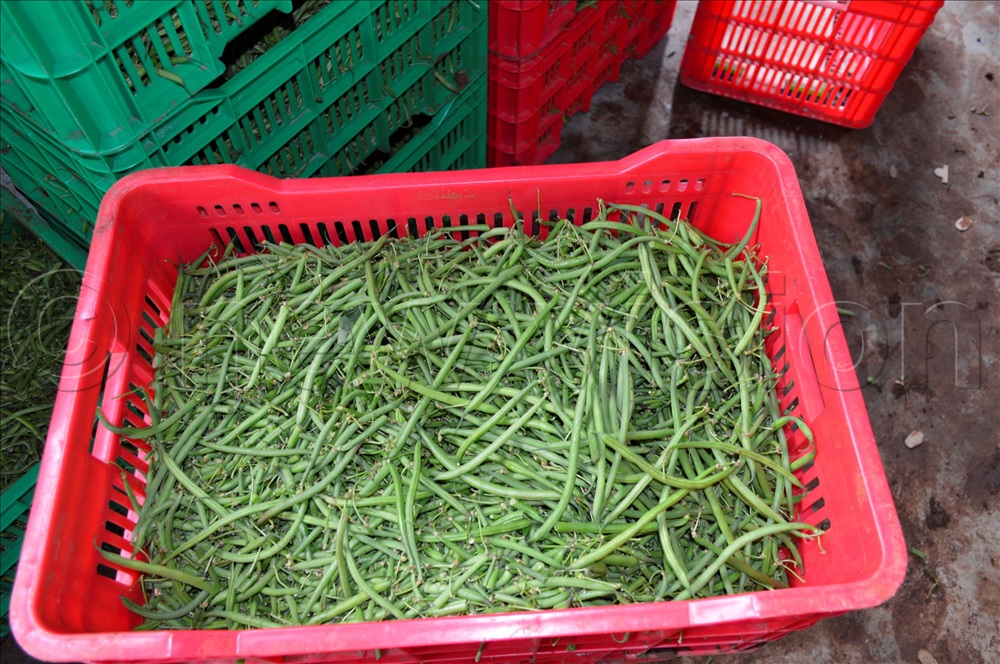By Umar Nsubuga
Refrigerated cars and trucks are essential in moving perishable vegetables from the packing houses to the airport for export.
Pre-marketing operations include washing, trimming, waxing, pre-cooling, grading, prepackaging and packing of the vegetable produce. Vegetables often require washing after harvest to remove any soil particles.
Isaac Malinga, the director of Maikut farm, one of the local farmers certified to export French beans to markets in Europe says do not assume that the produce is clean just by looking at it.
“It is sloppy for any farmer to sell dirty produce whether it is for the local or the international market,” he says.
Produce such as beet, carrot, celery, lettuce, radish, spinach and turnip are trimmed before washing to remove discoloured leaves or to cut back the green tops.

Waxing of the cucumber, musk-melon, pepper, potato, sweet potato and tomatoes gives the product a bright appearance and controls shrivelling through control of moisture loss. This may sound to many farmers as an unnecessary process but this goes to show just how exotic the market can get.
Once produce reaches the world market, Malinga says it has to compete as a world-class product.
“There will be no excuse that the exporter is from a developing country. Otherwise, it will not receive a premium price, although it may be a potentially excellent value crop,” he says.
Pre-cooling
Johnson Kangave, a refrigeration and air conditioning technician says pre-cooling or the rapid removal of heat from freshly harvested vegetables, allows the grower to harvest produce at optimum maturity.
“There is greater assurance that the produce will reach the consumer in top condition. Pre-cooling benefits the vegetable by slowing the natural deterioration that starts shortly after harvest,” he says.
Growth of decay organisms is slowed with a corresponding reduction of wilting by retarding water loss.
According to Kangave, major pre-cooling methods include hydro-cooling, contact icing, vacuum cooling and air cooling. In hydro-cooling the vegetable is cooled by direct contact with water flowing through the packed containers and absorbing heat directly from the produce.
In contact icing, crushed ice is placed in the package or spread over a stack of packages to pre-cool the contents.
The vacuum cooling produces rapid evaporation of a small quantity of water, lowering the temperature of the crop to the desired level.
Air cooling involves the exposure of vegetables to cold air. The air must be as cold as possible for rapid cooling, but not low enough to freeze the produce exposed to the direct air blast.
The preferred method of pre-cooling varies according to the physical characteristics of the vegetables. Hydro-cooling is recommended for asparagus, beet, broccoli, carrot, cauliflower, melon, peas, and sweet potato among others.
Vacuum cleaning is suitable for cabbage, lettuce and spinach. Air cooling is ideal for beans, cucumber, egg-plants, pepper and tomato.
Kangave says after produce has been pre-cooled, it is desirable to maintain low temperatures by shipping in refrigerated trucks, cars or stored in cold storage rooms.
Grading
Uniformity in size, shape, colour and ripening is of great importance in the marketing of vegetable products. The establishment of standard grades furnishes a basis for trade. Grade standards are mainly based on general appearance, size, type authenticity and absence of blemishes and defects.
Packaging
Malinga says pre-packaging and consumer packages have become a highly organised exercise often involving elaborate equipment.
“The produce is placed in bags made of paper bags. The packing of produce in consumer packages is excellent for self-service in retail stores.
Even within the country, consumers are demanding high-quality packaging.
The producing region is often the most satisfactory location for pre-packaging. This is particularly advantageous if it is to serve a large vegetable-growing area.”
Master containers for consumer packages are made of paperboard. Cartons, bags, baskets, boxes and crates in various kinds and sizes are used in packaging vegetables for marketing.
“The type of container is selected to fit the kind of vegetable. This provides a convenient means of transport, loading and stacking both for security and economy of space. Ensure that there is a uniform product throughout the packing process,” he says.
There is an opportunity for investors to make profits in the growing and marketing of several types of vegetables.





